
A magnet is a material or object that produces a magnetic field. This magnetic field is invisible but is responsible for the most notable property of a magnet: a force that pulls on other ferromagnetic materials, such as iron, steel, nickel, cobalt, etc. and attracts or repels other magnets.

A magnetic stirrer or magnetic mixer is a laboratory device that employs a rotating magnetic field to cause a stir bar immersed in a liquid to spin very quickly, thus stirring it. The rotating field may be created either by a rotating magnet or a set of stationary electromagnets, placed beneath the vessel with the liquid. It is used in chemistry and biology as a convenient way to stir small volumes and where other forms of stirring, such as overhead stirrers and stirring rods, may not be viable.

Nerf is a toy brand formed by Parker Brothers and currently owned by Hasbro. Most of the toys are a variety of foam-based weaponry, with other Nerf products including balls for sports such as American football, basketball, and baseball. Their best known toys are their dart guns that shoot ammunition made from "Nerf foam". Their primary slogan, introduced in the 1990s, is "It's Nerf or Nothin'!". Annual revenues under the Nerf brand are approximately US$400 million.

Levitron is a brand of levitating toys and gifts in science and educational markets marketed by Creative Gifts Inc. and Fascination Toys & Gifts. The Levitron top device is a commercial toy under this brand that displays the phenomenon known as spin-stabilized magnetic levitation. This method, with moving permanent magnets, is quite distinct from other versions which use changing electromagnetic fields, levitating various items such as a rotating world globe, model space shuttle or VW Beetle, and picture frame. 750,000 units of the top were sold from 1994 through 1999.

The LeapPad is a range of tablet computers developed for children, specifically of the ages 3-9. Various models of the LeapPad have been developed by LeapFrog Enterprises since 1999.
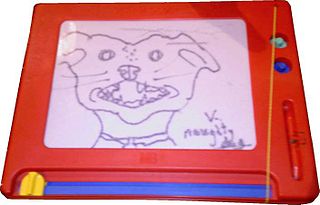
Magna Doodle is a magnetic drawing toy, consisting of a drawing board, a magnetic stylus, and a few magnet shapes. Invented in 1974 by Pilot Corporation, over forty million units have been sold to date worldwide, under several brands, product names and variations, including Tyco and Mattel/Fisher Price.
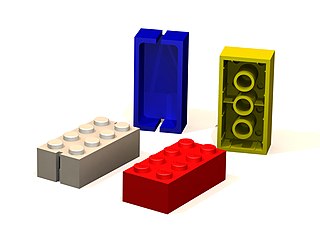
A construction set is a standardized piece assortment allowing for the construction of various different models. Construction sets are most often marketed as toys. Popular construction toy brands include Lincoln Logs and LEGO.

A rare-earth magnet is a strong permanent magnet made from alloys of rare-earth elements. Developed in the 1970s and 1980s, rare-earth magnets are the strongest type of permanent magnets made, producing significantly stronger magnetic fields than other types such as ferrite or alnico magnets. The magnetic field typically produced by rare-earth magnets can exceed 1.2 teslas, whereas ferrite or ceramic magnets typically exhibit fields of 0.5 to 1 tesla.

Magnetix is a magnetic construction toy that combines plastic building pieces containing embedded neodymium magnets, and steel bearing balls that can be connected to form geometric shapes and structures. Designed to be a cheaper version of the Geomag magnetic construction set, Magnetix's image suffered severely when an early manufacturing defect caused a death. It was sold under various brands after the defect was corrected.
Lego Creator is a Lego theme for generic models. Creator sets have few specialized bricks to create buildings, creatures, vehicles, and robots. Some sets featured instructions for three different possible builds from the bricks included and most sets in recent years have used the 3-in-1 label. Creator is also a parent theme to Lego Icons, a Lego subtheme for adolescents and adults featuring advanced building techniques and large piece counts, mostly known for Modular Buildings and detailed vehicles. Creator also has had several other subthemes such as X-Pods and mosaics.
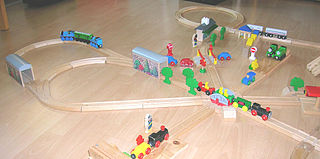
Wooden toy trains are toy trains that run on a wooden track system with grooves to guide the wheels of the rolling stock. While the trains, tracks and scenery accessories are made mainly of wood, the engines and cars connect to each other using metal hooks or small magnets, and some use plastic wheels mounted on metal axles. Some trains are made to resemble anthropomorphical, fictional, and prototypical railroad equipment.
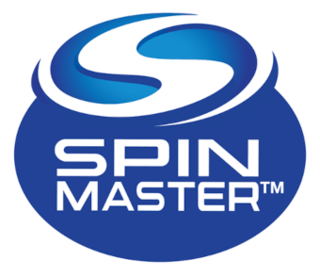
Spin Master Corp., formerly known as Spin Master Toys, is a Canadian multinational toy and entertainment company. Spin Master employs over 1,600 people globally with offices in Australia, Canada, China, France, Germany, Hong Kong, India, Italy, Japan, Mexico, the Netherlands, Poland, Slovakia, Sweden, the United Kingdom, the United States, and Vietnam.

Aquapets are interactive, electronic toys that were introduced in the US in 2004 by Wild Planet. They consist of a transparent, water-filled case housing a thumb-sized figure, and a base with a microchip, microphone, and speaker to register and respond to sounds made by kids or by other Aquapets. Each character has its own look, sounds and songs and responds with movement and melody. The more a child plays with their Aquapets, the more songs they will perform and the livelier they will become.
PlayMonster is a manufacturer and marketer of family entertainment products that specializes in games, children's puzzles, toys, activities, and teaching tools founded in 1985. In February 2016, Patch changed its company name to PlayMonster.

Thames & Kosmos (T&K) is a publisher of science kits, board games, and craft kits for kids of all ages. The science kits cover topics such as biology, physics, astronomy, and alternative energy. The company places an emphasis on teaching real-world issues, STEM topics, and practical skills through hands-on experimentation and comprehensive reading materials. T&K operates as the exclusive North American subsidiary of the German-based publishing house Franckh-Kosmos Verlags-GmbH & Co. KG – Kosmos for short – which was founded in 1822. T&K translates, rewrites, and distributes Kosmos's science kits, and started to design its own kits in 2005. It also produces kits licensed under other brands, such as National Geographic and The Dangerous Book for Boys. In 2012 the Company expanded its distribution to the UK and in 2015 Thames & Kosmos UK LP was formed as a subsidiary of Kosmos International GmbH. In 2013, Kosmos completed a major investment in Thames & Kosmos and became the official parent company of Thames & Kosmos.
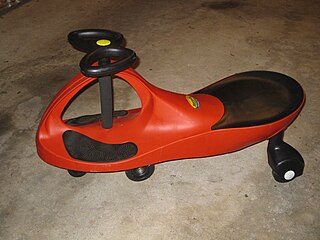
The PlasmaCar is a plastic ride-on toy car designed for children, made popular by Canadian toy distributor PlaSmart. The PlasmaCar can be propelled by wiggling the front steering wheel which is attached to two pivoting wheels touching the ground. It harnesses the natural forces of inertia, centrifugal force, gravity, and friction in order to drive the car forward and backward. It does not require a power source such as batteries, fuel, pedals, or gears - it simply runs on the child's ability to wiggle the steering wheel. It can be operated indoors and/or outdoors, though it works best on a smooth, flat surface.

Ello Creation System ("Ello") was a construction toy manufactured by the American toy-company Mattel, Inc. between the years 2002-2004. The toy set was created by the American designer Richard Manville. The Ello Creation System was a breakthrough toy created to engage girls in construction play.
The Oppenheim Toy Portfolio is a nationally recognized independent consumer review of children's media. It was founded in 1989 by child development authors Joanne Oppenheim and her daughter Stephanie Oppenheim. The newsletter is published quarterly and have held an annual series of awards that have gained attention in the industry. They have spoken on children psychology/behavior, toys, and child media on OPRAH, CNN, NBC Nightly News, ABC World News Tonight, MSNBC, Lifetime, and both are Contributors to NBC's TODAY Show.

Moose Toys, also known as Moose Enterprises or The Moose Group, is an Australian-owned toy design, development, and distribution company founded in 1985 by Brian Hamersfeld. The company is headquartered Cheltenham, Victoria, Australia, has over 600 staff, and distributes to over 50 countries. They are most known for their collectable minifigure toy lines "The Trash Pack" and "Shopkins", and their associated francises.
Lottie Dolls are a series of dolls created by Arklu Ltd. Launched in August 2012. Lottie promotes STEM subjects for kids and was even the first doll in space when she travelled to the International Space Station alongside British European Space Agency Astronaut, Tim Peake, on the Principia Mission, in December 2015.
















